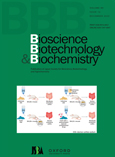[on May 21, 2022]
Visionary NOUGEIKAGAKU 100
Symposium (3) on Microbe and Biomass Area: "Symbiosis and ecology of microbes: We are living in a microbiol world"
Date & venue; Online on May 21, 2022
1. How and why fungi synthesize natural products?
-ECOLOGICALLY RELEVANT SECONDARY METABOLITES IN FUNGAL-BACTERIAL COMMUNICATION –
Nancy P. Keller, Department of Medical Microbiology and Immunology, University of Wisconsin-Madison
Bacteria and fungi reside together in diverse environmental niches ranging from soil matrices to communities within and on the host body. We find that small extracellular signaling molecules are the key coinage for inter-kingdom microbial communications. I present two disparate microbial playgrounds where secondary metabolite production influences bacterial and fungal community composition and survival. First, I consider the role of ralsolamycin, a bacterial lipopeptide, in mediating antibacterial secondary metabolite production in fungal colonized by the producing bacterium Ralstonia solanacearum. Ralsolamycin provides ‘housing’ for Ralstonia by inducing fungal chlamydospores that the bacterium can enter and facilitates ‘hitchhiking’, allowing other bacteria to invade the chlamydospores. Next, I present a case of nutrient acquisition where copper regulation of Aspergillus fumigatus isocyanides induces antimicrobial metabolites that provides A. fumigatus with and fitness advantage under low copper environments.
2. Plant interactions with pathogenic and beneficial microbes
Kenichi Tsuda, Huazhong Agricultural University
Plants are colonized by pathogenic and beneficial microbes that significantly affect plant growth and reproduction in nature. Plants require some microbes for their survival, but ironically, some microbes are serious threat to plants, pointing to a dilemma that plants face. Therefore, the fundamental question is how plants engage with beneficial bacteria while at the same time restricting pathogenic bacteria. However, we still lack fundamental knowledge of how plants affect bacterial metabolism to control their function and growth. In addition, interactions between plants and each neighboring microbial species are fundamental building blocks that collectively determine the structure and function of the plant microbiota contributing to plant health, but the molecular basis of such interactions is poorly understood. We tackle these questions by using multi-omics and molecular genetics approaches and try to use our knowledge to improve agriculture.
3. Experimental Evolutionary Approaches to the Evolutionary Origin of Symbiosis
Takema Fukatsu, Prime Senior Researcher, AIST., Professor, the University of Tokyo., Professor, University of Tsukuba., ERATO Research Director
Obligate insect-bacterium mutualism is among the most sophisticated forms of symbiosis. However, such obligate symbiotic bacteria must have been originally derived from free-living environmental bacteria. How have highly specialized obligate mutualists arisen from less-specialized free-living microorganisms? We developed a novel insect model for experimentally investigate the evolution of symbiosis with tissue tropism, vertical transmission and mutualism. Our studies using the experimental evolutionary model system uncovered that evolution of mutualism can proceed more easily and rapidly than conventionally envisaged, which may explain why microbial mutualisms are omnipresent in nature.
4. Massive Single-Cell Genomics of Environmental Bacteria and Beyond
Masahito Hosokawa, Waseda University., bitBiome, Inc.
We have developed single-cell genome sequencing technology as a powerful tool for studying uncultured microbes. Single-cell genome sequencing enables us to obtain genomic information of diverse microbial populations individually, which is difficult with conventional metagenomic analysis, such as rare microbes or microbes with closely related species. It can be used for various studies, including metabolic analysis, screening of functional genes, and identification of useful chemical synthetic pathways. This talk will introduce single-cell genome sequencing technology and its application in producing novel enzymes from digital sequence information on the genetic source.
5. Function of cyclic lipopeptides derived from Bacillus spp. in biological control for plant diseases
Kenji Yokota, Faculty of Applied Biosciences, Tokyo University of Agriculture
Cyclic lipopeptides (cLPs) play key roles in biological controls using Bacillus spp. against several kinds of plant diseases. It is well-known that cLPs show antimicrobial activity against a broad range of microorganisms including plant pathogens. Therefore, the antimicrobial activity of cLPs has been deduced as a major function in disease suppressions by cLPs-producing Bacillus strains. Recently, it has found that cLPs behave as elicitors to induce disease resistance in plants. I would like to introduce the recent advances of the induced disease resistance elicited by cLPs in my presentation.
6. Challenge the Future with Microalgae – Creating a Culture of Eating Algae –
Toshiya Sasaki, Hiroe Hayashi, Tabérumo corporation
As the global population grows protein demand is expected to increase substantially in the future. Tabérumo corporation aims to solve the protein crisis and realize sustainable food supply and health for humans by producing spirulina and creating a culture of eating algae. Our raw spirulina “Tabérumo®” is a product that maximizes the strength of spirulina's odorless fresh taste and rich nutrients. Currently, to popularize "eating algae," we are working on the development of various products using Tabérumo®, by participating in the "MATSURI" project, the world's first joint project which aims to develop a society based on algae, of the Chitose Group.












































